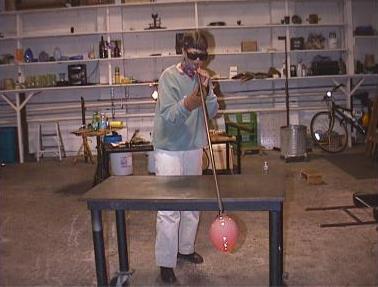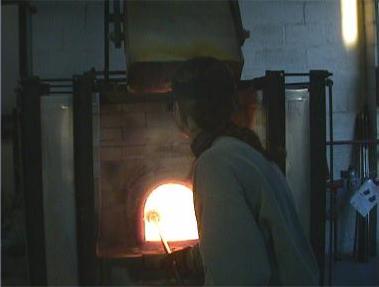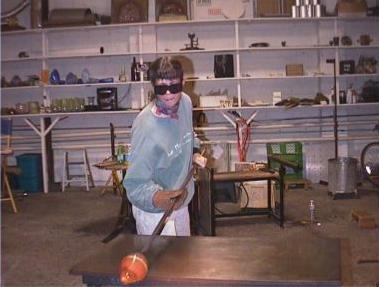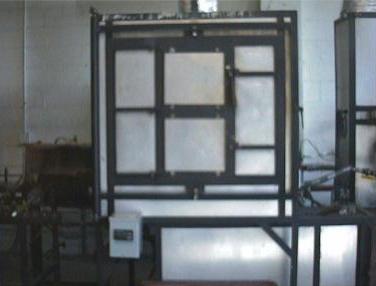|
|
In the Studio...
The best blown glass is a team effort. The artist who leads the team is called the “gaffer.” The others on the team are called “assistants.” It takes years of experience to be good at either role. Not every glassblower is capable of being a good assistant, which requires the ability to second-guess the gaffer and perform ballet-like moves with hot, delicate glass and tools. |
 |
The glass starts in a furnace, where it is molten at 2100 to 2200 degrees Fahrenheit. It is the consistency and color of fresh honey in its molten state. The glass is pulled from the furnace by twirling a pipe in the hot glass, a process known as “gathering.” |
 |
After gathering once or twice, a puff of air is mouth-blown into the pipe, which creates a bubble in the glass. Color is then added by spreading, sprinkling or rolling the color onto the hot glass bubble. Generally, additional layers of hot glass are then gathered over the color, and the bubble is blown out and shaped with various tools called jacks, tweezers, taglia, sofietta, parchoffis, and even wet newspaper. |
 |
The glass has to be kept vary hot while it is worked. It is reheated on the end of the blowpipe in an open furnace known as a “glory hole.” |
 |
Glass art with closed bottoms (bowls, vases, etc.) is transferred to a second, solid pipe called a punty (or punte or pontil, depending on what country you’re from). This transfer allows the gaffer to shape the neck and lip of the piece before it is completed. The connection to the punty is very fragile, and pieces often drop off and shatter during the transfer from blowpipe to punty. These pieces are then called “floor models.” Sometimes the shards are re-used as a color accent on another piece, but they generally cannot be re-melted. |
 |
After a piece is finished, it is broken off of the punty and the assistant places it in a furnace called an annealer. This furnace is programmed to slowly go from 900 degrees Fahrenheit to room temperature over 12-48 hours, depending on the thickness of the piece. If the glass cools to room temperature too quickly, stresses in the glass cause it to break. |
 |
|